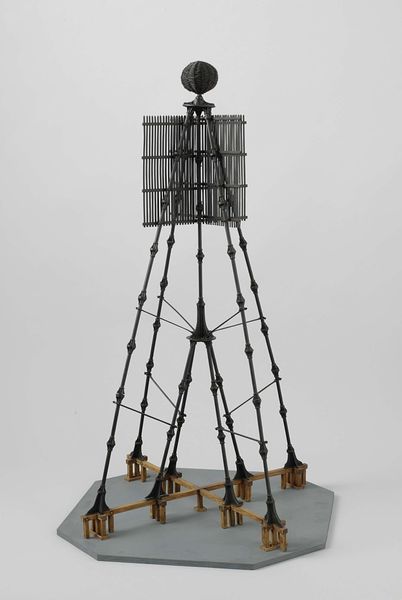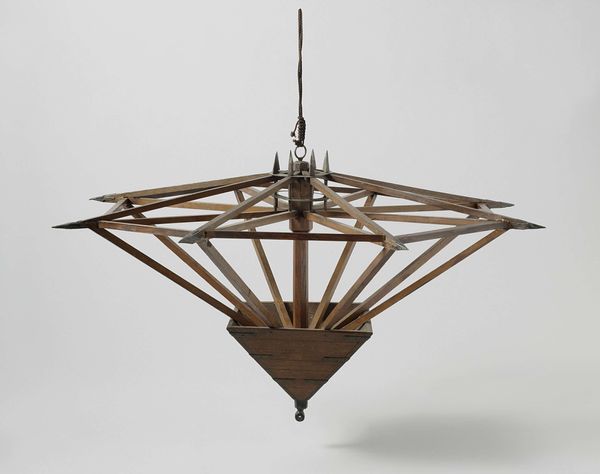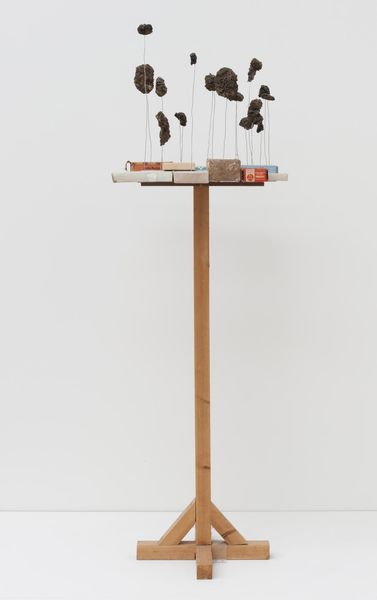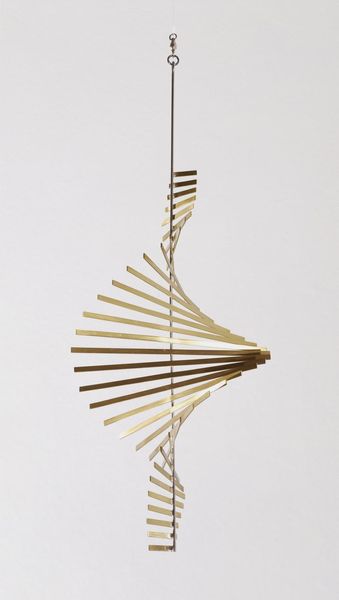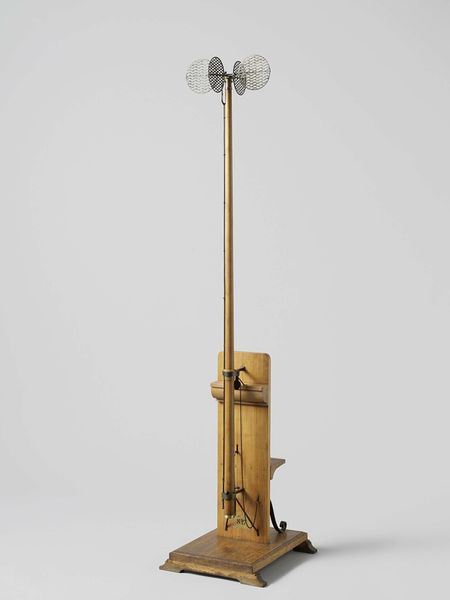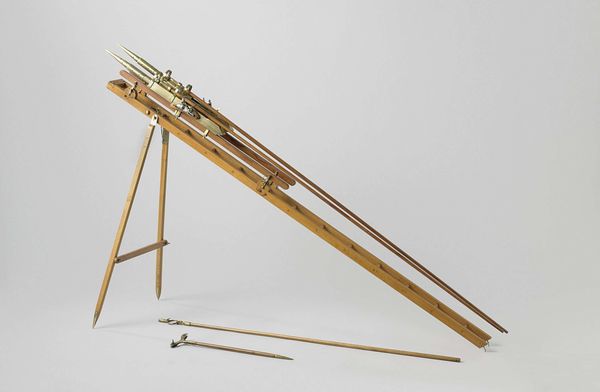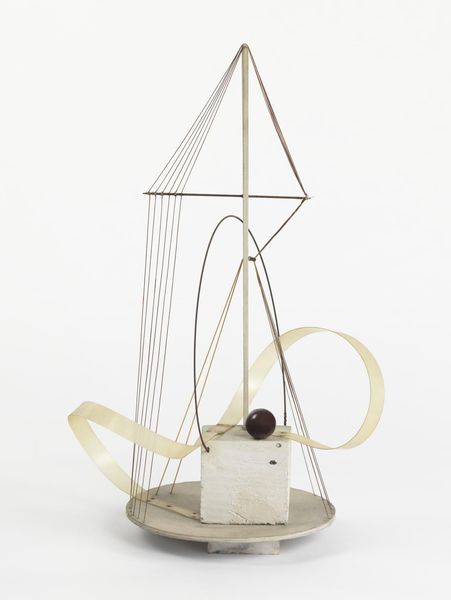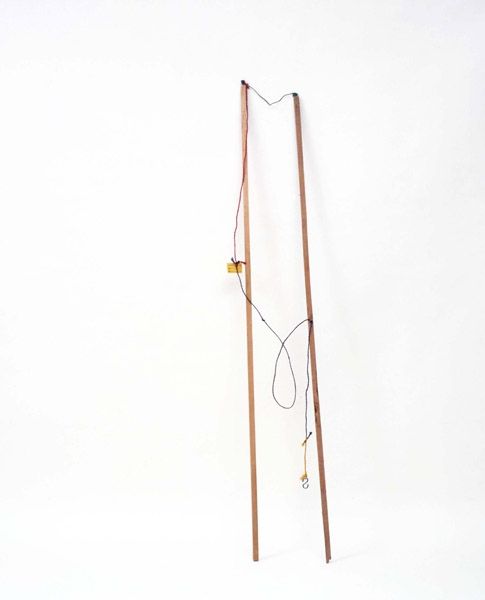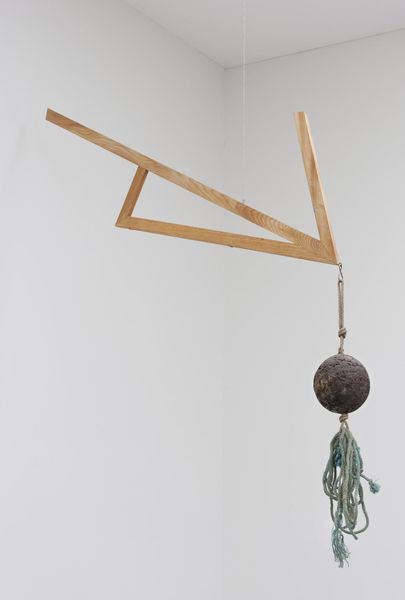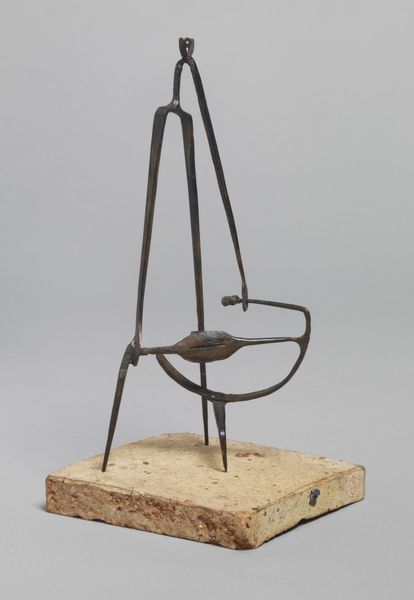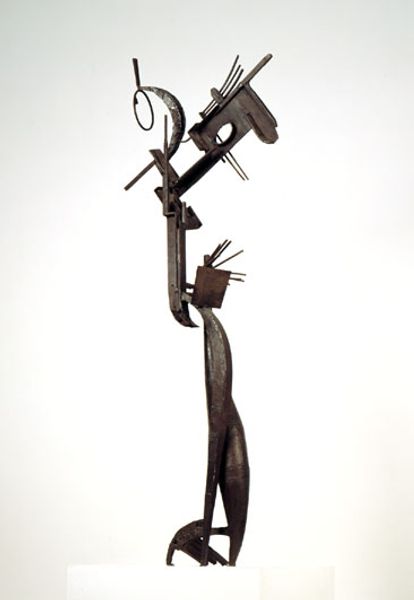
wood, architecture
#
neoclacissism
#
architecture mock-up
#
geometric
#
architecture model
#
wood
#
history-painting
#
architecture
Dimensions: height 53.5 cm, width 18 cm, depth 18 cm
Copyright: Rijks Museum: Open Domain
Curator: This model, likely crafted between 1800 and 1806, depicts an optical telegraph. It's predominantly constructed from wood, showcasing incredible precision in its miniature architectural form. Editor: My immediate reaction is that this object has such a strong geometric clarity, like a stripped down neoclassical building. The bare wood and clean lines gives it a severe but elegant air. Curator: Absolutely. You've hit on its essence. It embodies a transitional moment, doesn't it? Neoclassical aesthetics are being harnessed for distinctly modern applications – in this instance, the rapid dissemination of information. Consider the social implications: efficient communication for governance and possibly, control. Editor: The form indeed follows function. Looking at the angles of the arms and the clean vertical lines of the tower itself, there is something innately readable, like a rudimentary visual language attempting clarity through strict geometry. It's pure signal, distilled to its visual essence. Curator: And the materiality reinforces this! Wood, readily available but demanding skilled labor. This speaks to a specific kind of industrial vision. It hints at standardized construction, though probably realized through the meticulous hands of artisans, mediating technological innovation. Think about how many of these needed to be built, maintained, and operated! It gives you insight into the society that would want such thing to begin with. Editor: Yes! I'm increasingly aware of how the interplay of the dark wood framework versus the stark white movable arms creates a rhythmic pattern that guides the eye upward, emphasizing its function of transmitting information upwards. The interplay between line and plane suggests order. Curator: Precisely. And within that perceived order lies a fascinating interplay of material accessibility, artisanal labor, and nascent industrial strategies. Editor: Indeed. Ultimately it reveals a pivotal moment where abstract design principles and technical possibilities shaped social infrastructures. Curator: A fine, interconnected, visual system of influence and control captured so concisely in miniature. Editor: Leaving us to contemplate how design's core aesthetic also subtly shapes entire worldviews.
Comments
No comments
Be the first to comment and join the conversation on the ultimate creative platform.
